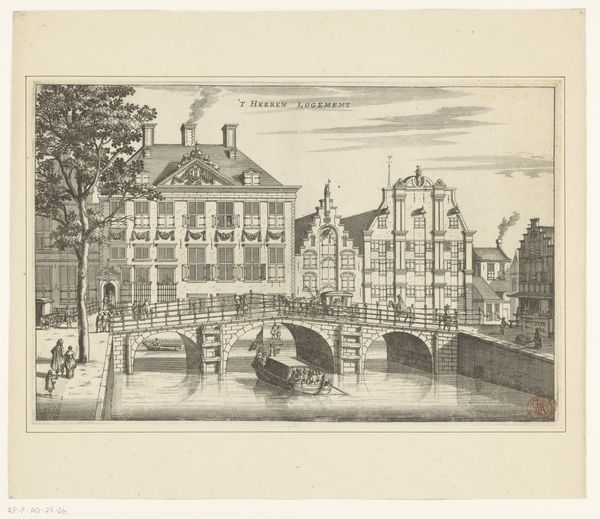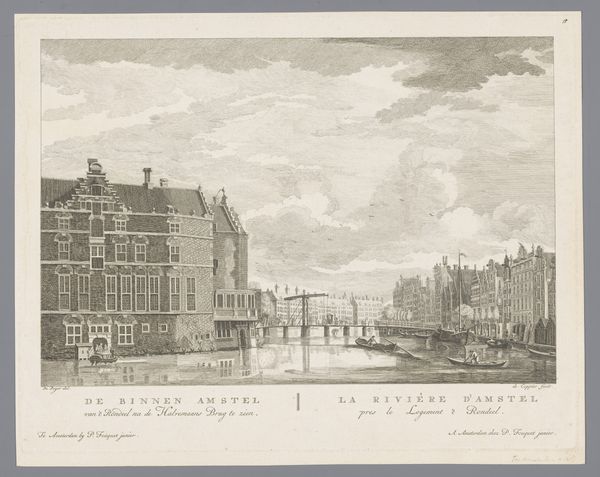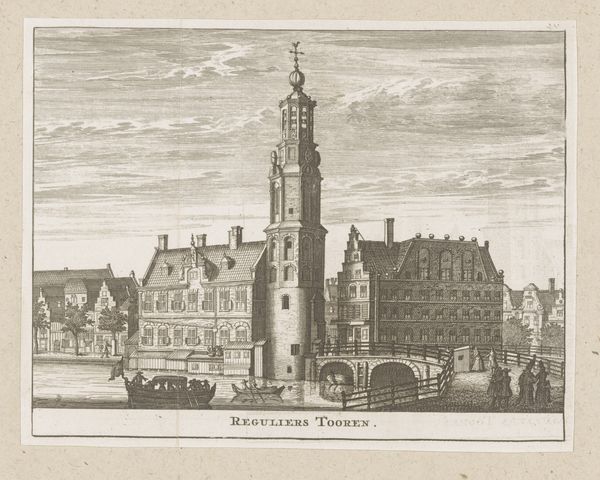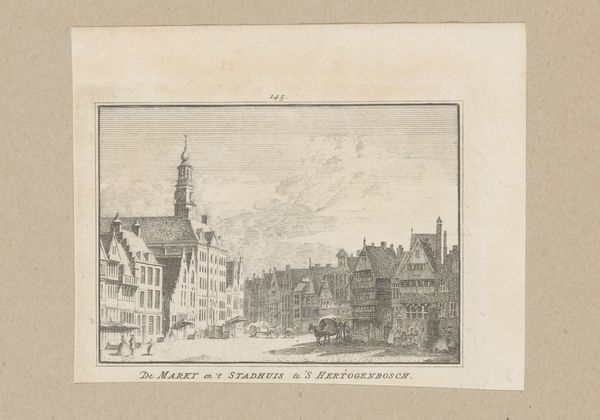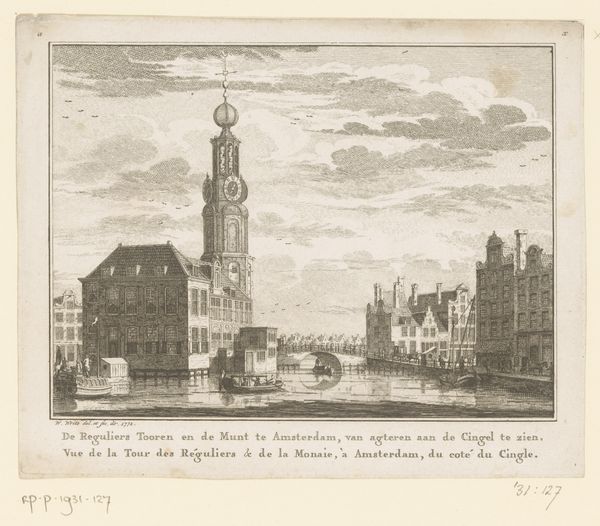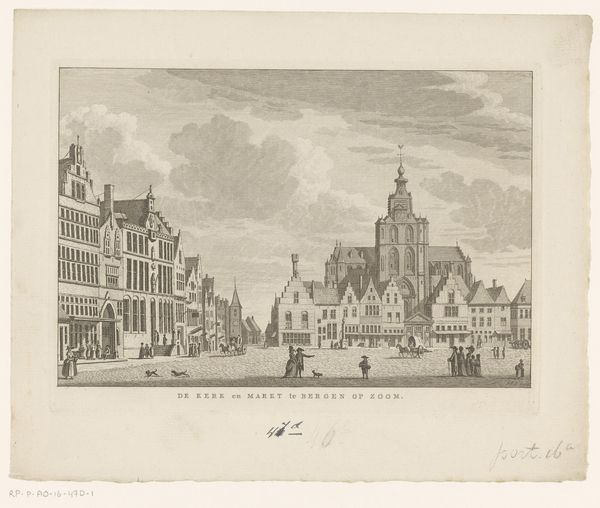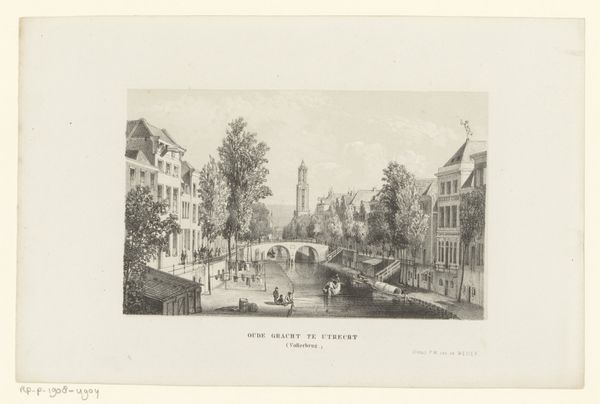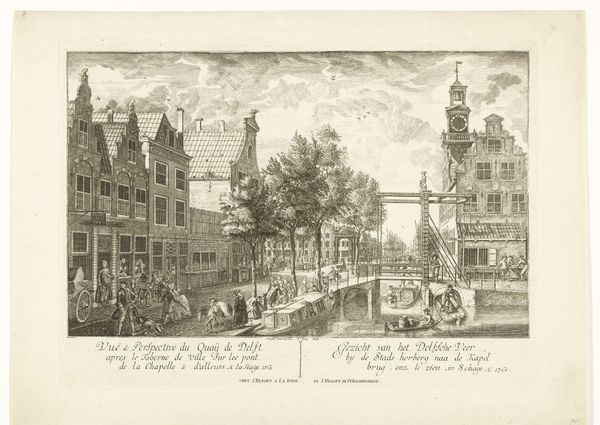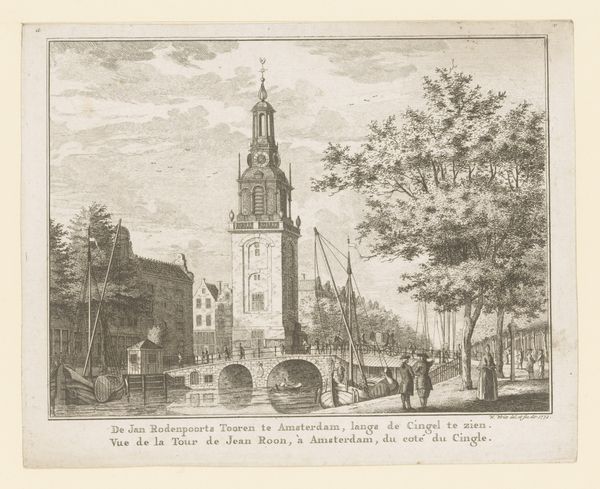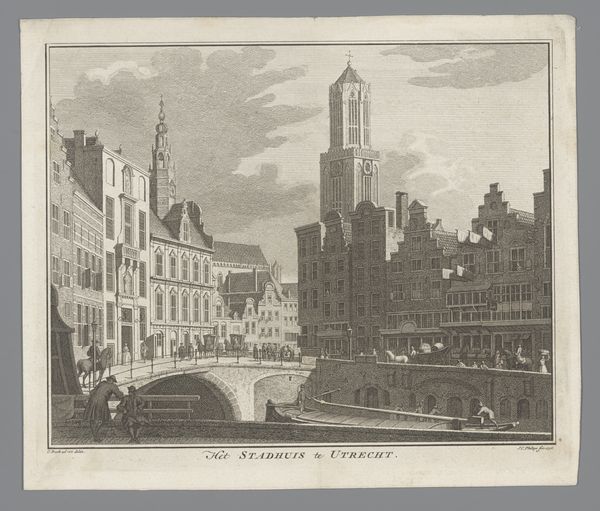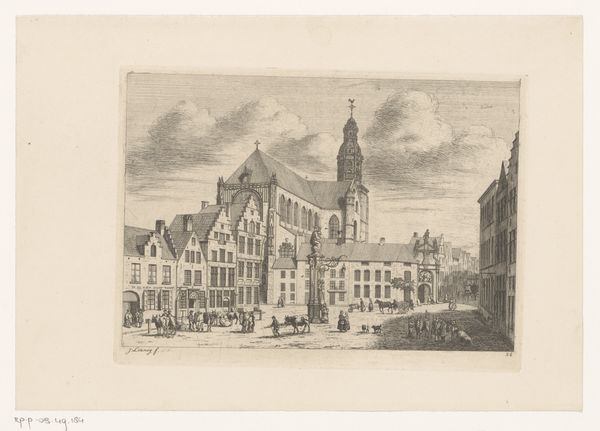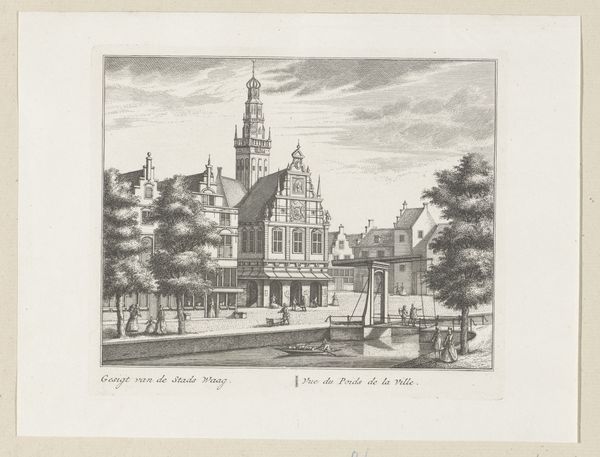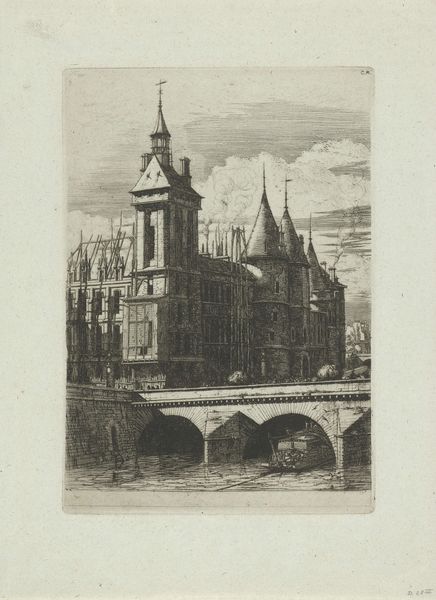
print, engraving
#
dutch-golden-age
# print
#
landscape
#
line
#
cityscape
#
engraving
Dimensions: height 117 mm, width 139 mm
Copyright: Rijks Museum: Open Domain
Curator: This is Jan Veenhuysen’s “View of the Munttoren in Amsterdam,” an engraving dating back to 1664. Editor: Immediately striking. The spire's presence feels quite insistent, a visual claim staked upon the skyline. It makes me wonder, who exactly was this landscape for? Curator: Landscape views, especially cityscapes during the Dutch Golden Age, symbolized civic pride and mercantile power. But notice, the Munttoren itself wasn't just any building. Originally a defensive tower, it gained symbolic importance when it temporarily housed the mint. Think of it—the very structure producing the coins shaping economic destinies is being immortalized. Editor: Ah, yes, the subtle cues of power dynamics woven into the cityscape! It also appears deceptively peaceful here. Look at those tranquil waterways, so different from the political complexities underpinning Amsterdam's golden age. There’s also a contrast: the detail etched into the buildings versus that muted sky—where is the drama? Curator: The drama is subtle, yes, residing less in the theatrics of light and more in the accumulation of precise detail. The symbolic program doesn't rely on bombast. Each line reinforces a sense of order, of carefully cultivated prosperity. That regularity speaks volumes about cultural ideals, the continuity they aimed for. Editor: Yet, let's also think about what’s excluded, about the marginalized. What does this curated perspective obscure about the realities of labor and colonialism which fueled this economic golden age? The visual narrative serves a purpose—perhaps obscuring difficult realities for those in power at the time. Curator: I see your point. These images definitely construct an idealized vision, yet that very ideal tells us something. The consistent emphasis on trade and civil order reflected anxieties alongside ambitions. It implies a society striving for stability—a projection perhaps as much as a record. Editor: So the Munttoren doesn't merely reflect Amsterdam; it actively constructs an idea of Amsterdam. These lines and compositional choices subtly shape the way people were taught to see themselves. A fascinating negotiation between record and agenda. Curator: Precisely! A static emblem of a city's aspirations. Editor: An emblem worth further scrutiny.
Comments
No comments
Be the first to comment and join the conversation on the ultimate creative platform.
